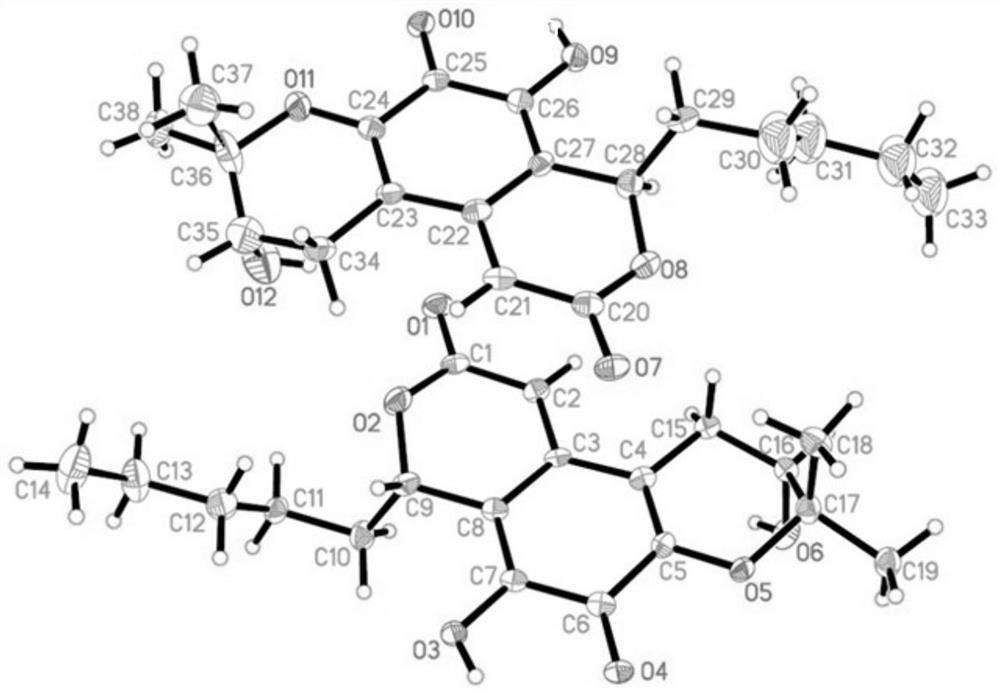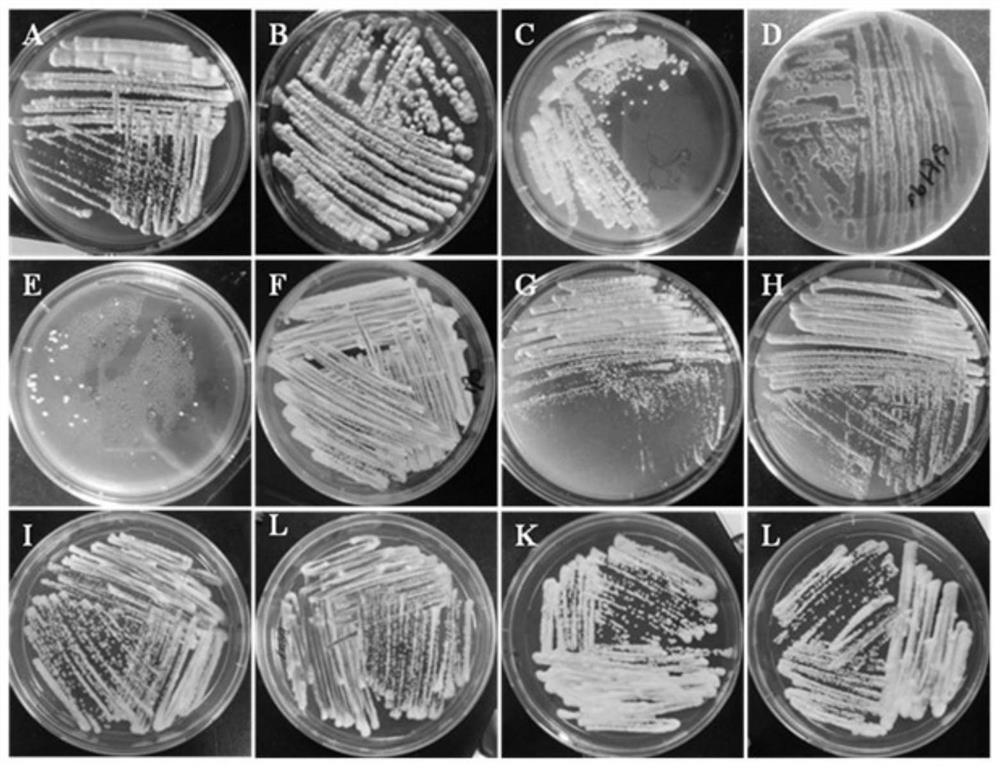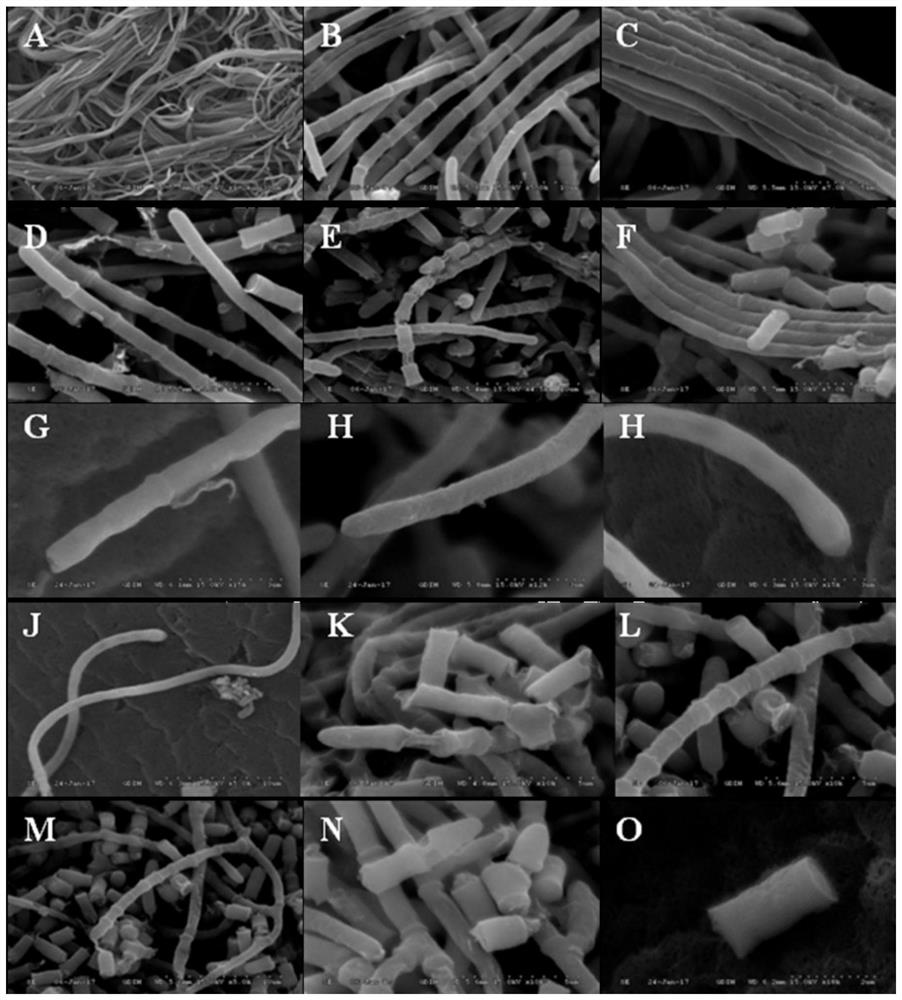Marine fungus-bacterium symbiont, metabolite of marine fungus-bacterium symbiont and application of metabolite in preparation of antibacterial drugs
A technology of symbionts and fungi, applied in the direction of chemicals for biological control, antibacterial drugs, and methods based on microorganisms, can solve the problems of no medicine, severe environment, residues, etc., and achieve good antibacterial activity and The effect of antifungal activity, simple process and reliable source
- Summary
- Abstract
- Description
- Claims
- Application Information
AI Technical Summary
Problems solved by technology
Method used
Image
Examples
Embodiment 1
[0031] Embodiment 1: Separation and purification of bacterial strains
[0032] Take an appropriate amount of seabed silt from Daya Bay in the northern part of the South my country Sea, put it in a clean petri dish, and air-dry it for later use (about a week). Put appropriate amount of air-dried sea mud and fresh sea mud into a 250mL Erlenmeyer flask filled with 30mL of artificial seawater (a small amount of glass beads can be added inside), shake at 200rpm on a shaker at 28°C for 30min, and then heat-shock in a water bath at 55°C. 5min standby. Use a pipette gun to draw 350 μL of the prepared sea mud sample, and evenly spread it on the plate of the prepared fucose-proline agar. The formula of the medium is: proline 1g, fucose-proline 5g,K 2 HPO 4 1g, MgSO 4 .7H 2 O 1g, (NH 4 ) 2 SO 4 1g, multivitamin (p-aminobenzoic acid, riboflavin, folic acid, inositol, pantothenic acid, Vc, VB1, VB6, VB12 50mg each, biotin 25mg), sea salt 30g, CaCO 3 2g, 20g of agar powder, add wa...
Embodiment 2
[0033] Embodiment 2: the identification of bacterial strain
[0034] 1. Morphological identification
[0035] The obtained culture host fungus F190 (fungus / bacteria symbiont Spiromastix sp.SCSIO F190 / Alcaligenes faecalis SCSIO B001) bacteria cake was inoculated onto the poured ISP2, ISP4 and MEA plates, cultured in the dark at 28°C, and the growth morphology of the colonies was observed regularly every day . The sporulation structure and the morphology of the spores were observed with an optical microscope and a scanning electron microscope, and the size of the spores was measured. Its ecological characteristics are as figure 2 As shown, the colony grows faster on the ISP2 medium, and the diameter of the colony is 1.0-3.5mm in 3 days under the dark condition of 28°C. The colony is white at the beginning, and then gradually turns orange. Such as figure 2 A-D); The growth of the colony on the ISP4 medium is slow, and the diameter of the colony is smaller for 3 days at 28°C...
Embodiment 3
[0042] Embodiment 3: Preparation of the fermentation broth of fungi / bacteria symbiont Spiromastix sp.SCSIO F190 / Alcaligenes faecalisSCSIO B001
[0043] Pick an appropriate amount of fungal / bacterial symbiont Spiromastix sp.SCSIOF190 / Alcaligenes faecalis SCSIO B001 from the prepared ISP2 medium plate and add it to 50mL of PDB medium, culture at 28°C and 200r / min on a shaker for 2-3 days Obtain seed liquid. Then carry out expanded fermentation, add all 50mL seed liquid into a 1L Erlenmeyer flask containing 200mL PDB medium, culture on a shaker at 28°C for 7 days at 200r / min to collect the fermentation liquid, centrifuge the fermentation liquid at 3900r / min to get the supernatant , that is, the strain fermentation broth is used for subsequent use.
[0044] Remarks: The PDB medium used above is the potato dextrose water medium purchased from Huankai Biotechnology Co., Ltd.
PUM
 Login to View More
Login to View More Abstract
Description
Claims
Application Information
 Login to View More
Login to View More - R&D
- Intellectual Property
- Life Sciences
- Materials
- Tech Scout
- Unparalleled Data Quality
- Higher Quality Content
- 60% Fewer Hallucinations
Browse by: Latest US Patents, China's latest patents, Technical Efficacy Thesaurus, Application Domain, Technology Topic, Popular Technical Reports.
© 2025 PatSnap. All rights reserved.Legal|Privacy policy|Modern Slavery Act Transparency Statement|Sitemap|About US| Contact US: help@patsnap.com



